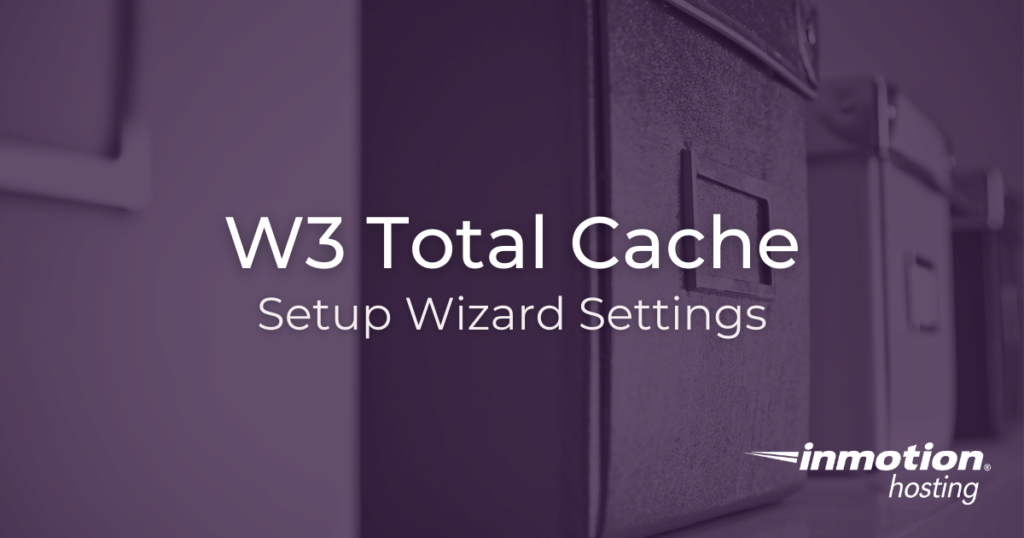
If you need a new home for your WordPress site, look no further than InMotion’s WordPress Hosting solutions for secure, optimized, budget-friendly servers.
![]() Fast & Easy Transfers
Fast & Easy Transfers ![]() Free SSLs
Free SSLs ![]() Hack Protection
Hack Protection ![]() Affordable
Affordable
View WordPress Hosting Plans
Once you have installed the W3 Total Cache plugin, you can enter the Setup Guide right from the main plugin page. For many users it can be difficult configuring cache settings for the first time. There are many different ways to perform this operation, some require coding, and some do not. W3 Total Cache will not only help you set up initial caching but provide advice on different configurations you can consider.
- How To Access W3 Total Cache Settings
- Page Cache
- Database Cache
- Object Cache
- Browser Cache
- Lazy Load Images
- Further Resources
How To Access W3 Total Cache Settings
Just click Settings, or choose Performance > Setup Guide. Bear in mind, your website may perform differently at different times. It’s a good idea to test your site at different times or under different conditions.
Page Cache
The first setting you will be prompted to set is the page cache storage engine. Click Test Page Cache to begin the page cache test.
You have your choice among many different storage engines or the default disk options as follows:
- Disk: (Basic)
- Uses a PHP script to store the page cache on disk.
- Disk: (Enhanced)
- Uses .htaccess rewrites to store the page cache on disk.
In most cases, but not all, the enhanced disk option will be preferable. That’s why W3 Total Cache will tell you how much each option affected your particular website. Sometimes the basic script works better; so it’s best to first run the test, observe the result, and choose which one works improve page speed more significantly.
Database Cache
Caching database queries on disk can have an effect on speed, but, as the program recommends, it may be best to leave this setting unchanged unless you have installed third party storage engines like Redis or Memcached.
Object Cache
Object caching gives you the power to store parts of your page template that would otherwise load every time a new page is loaded. It is recommended to enable the object cache. And again, if you do not have one of the recommended third-party storage engines installed you should still go ahead and enable the disk cache by clicking the Disk radio button and choosing Next.
Browser Cache
Providing cache instructions to the browser can be complicated. W3 Total Cache can do this for you. By enabling browser caching, special instructions will be given to the browser on how to store certain resources (like CSS and JavaScript) that would otherwise have to load every time a page is loaded on your site. Enabling browser caching should dramatically improve your site speed on repeat visits.
Lazy Load Images
“Lazy loading” images means that images not yet displayed on screen will not load. Images can cost your server quite a bit of processing power, so deferring this process to when it is needed can save you some serious load time. It is definitely recommended that you enable this feature.
Further Resources
Below you will find other helpful resources from the Support Center:
- Top 10 WordPress SEO Plugins
- Using Mailchimp for WordPress
